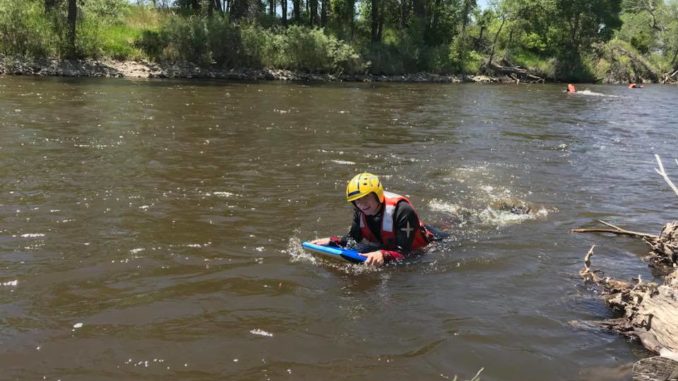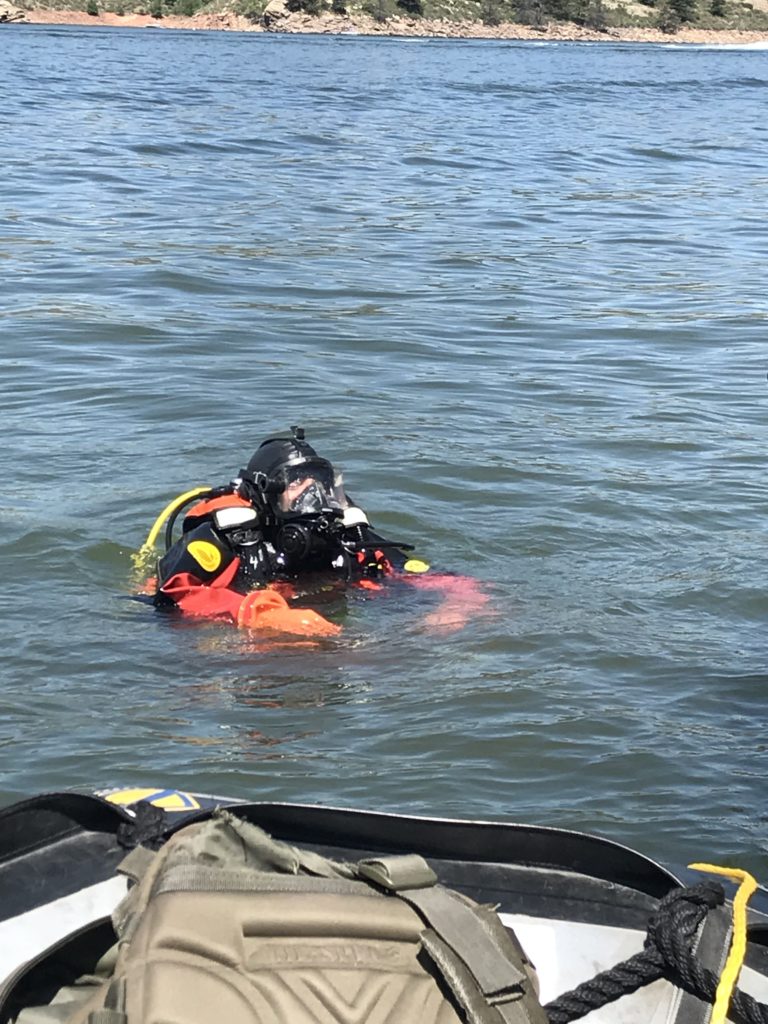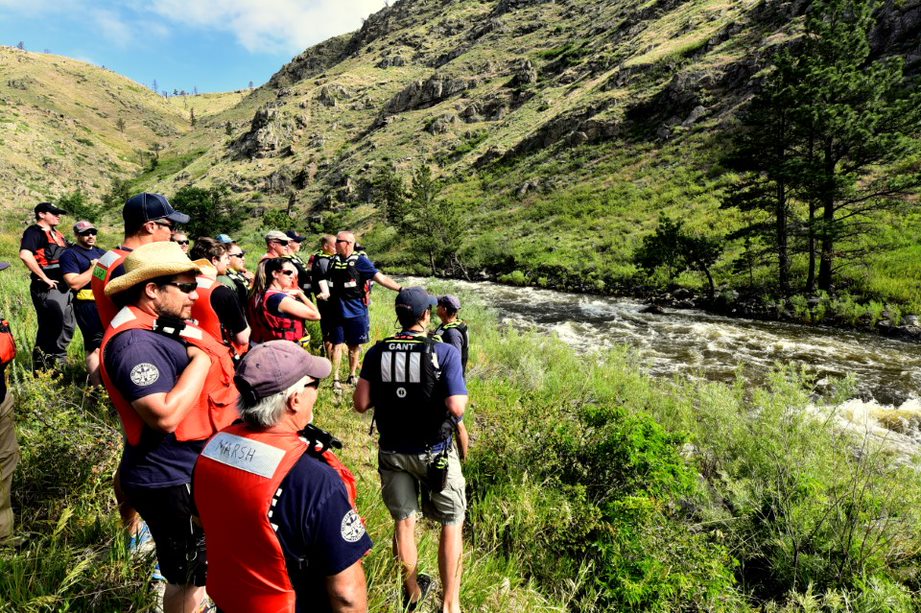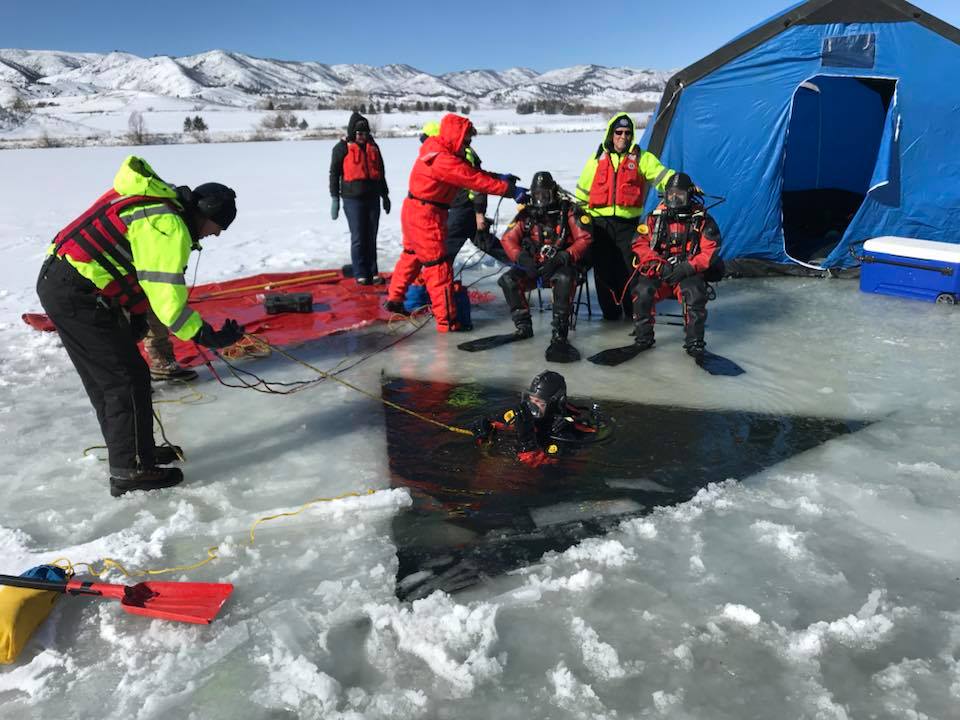
Larimer County Dive and Rescue Team Gives Advice During High Runoff
By Janice Bytheway
Larimer County Dive and Rescue Team, Vice President
Dive 55
When you’re a volunteer first responder, there’s no predicting when you’ll get a call, so on Saturday June 29, when Larimer County Dive Rescue Team was paged to respond to a rafter missing on the Poudre River near the Mishawaka, members abandoned their weekend plans to respond (one member even left the chair mid-haircut!). It was not the first time this season LCDRT had been called to the river, and it likely will not be the last, as rivers around Colorado are running high and fast after a cool, wet spring and above-average snowpack. Sadly, the number of people missing or killed on Colorado’s rivers this year has risen into the double digits.

While swift water season is LCDRT’s most busy time of the year, the team responds to water rescue and recovery calls year round, assisting agencies around the county with ice rescue, dive rescue, and recovery of everything from sunken boats to criminal evidence. The team is equipped to respond anywhere in Larimer County, 24 hours a day, 365 days a year, and spends one weekend per month training together, plus additional training time in the classroom and pool in order for members to earn the necessary certifications.
In May 2109, LCDRT partnered with Poudre Fire Authority for swift water training. Since each swift water rescue mission requires upwards of 20 personnel, the two agencies work together frequently on these types of calls. Members practiced self-rescue and swimming techniques and worked together on several rescues and recovery scenarios, including a scenario involving missing persons, the skills from which were put into action just over a month later on the Poudre. And while the members of LCDRT are highly trained and have specialized gear, many of the steps they take to stay safe on the river can help you stay safe too. Before recreating on our area rivers, LCDRT recommends:
- Waiting until flows have subsided somewhat. High water can obscure obstacles and can catch even the strongest swimmer off guard.
- Walking the stretch of river you plan to be on. Note hazards such as fallen trees and have a plan to avoid them. Also, note any diversion (lowhead) dams and have a plan to be off the river at least 500 yards upstream.
- Having the proper personal protective gear. This includes a personal flotation device (PFD, or life jacket), a helmet, a wetsuit or drysuit, and water shoes.
- Having a river-worthy watercraft. Inflatables should have multiple chambers in case one is punctured. If you have multiple watercraft floating in a group, never tie them together.
- Making sure someone knows where you plan to be, and when to expect you back.
If you do find yourself in trouble on the river, float on your back with your feet pointed downstream. Then angle your body 45 degrees with your head is pointing towards the shore, and the river will naturally push you in that direction. If you find yourself stuck on a rock or the wrong side of the river, have someone call for help; LCDRT or one of their partner agencies will come to help you make it safely back to the right side.
If someone else is in trouble in the river, never go in after them. Try to reach out to them with a sturdy branch or throw them a rope. Try to stay with them while you or someone else dials 911. If you lose sight of them, make a note of where you were when you last saw them. This “Last Seen Point” is crucial to rescuers as they determine where to focus their search efforts.

LCDRT relies on community support to serve the citizens of Larimer County. If you’d like to learn more about LCDRT, are interested in joining, or would like to make a donation, check out their website at www.lcdrt.org, or email info@lcdrt.org. The team is currently seeking new members, and no previous diving experience is needed to join. The need for shore-based members is as great as the need for members in the water.

Support Northern Colorado Journalism
Show your support for North Forty News by helping us produce more content. It's a kind and simple gesture that will help us continue to bring more content to you.
BONUS - Donors get a link in their receipt to sign up for our once-per-week instant text messaging alert. Get your e-copy of North Forty News the moment it is released!
Click to Donate